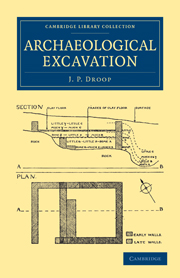Summary
The archaeologist's general aim on approaching a new site should be to draw from it all the knowledge that he can, to unearth as complete a skeleton as possible of the history of that particular spot during the period when it was a human habitation. Unless that period belongs to times when men wrote what can now be read, he can hardly hope to uncover perfect history, but the more complete the dry bones that he lays bare the better the chance that they will rise again as history when imagination shall have prophesied to them.
Therefore the excavator's sympathies should be as wide as possible, and nothing that he finds should meet with his neglect because it is not just what he is looking for. This sounds obvious and most unnecessary to be said, yet, to take but one instance of a breach of this rule, there are to-day archaeologists with well-known names who will dig a site only for its inscriptions, paying no attention to other and in their eyes lesser finds. This is a double crime, a crime against the actual neglected finds and a crime against the site and its possible treasures yet unfound. It should always be remembered that in general a site cannot be touched and left without irreparable damage, and that there can hardly be a worse sin for an excavator than having attacked a site to leave the part begun unfinished. Yet this is likely to be the result of an interest that is insufficiently catholic.
- Type
- Chapter
- Information
- Archaeological Excavation , pp. 1 - 6Publisher: Cambridge University PressPrint publication year: 2010First published in: 1915



